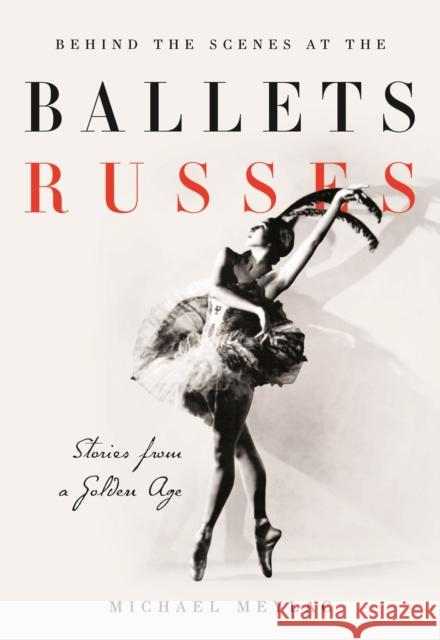Behind the Scenes at the Ballets Russes: Stories from a Silver Age » książka
Behind the Scenes at the Ballets Russes: Stories from a Silver Age
ISBN-13: 9781780768595 / Angielski / Twarda / 2017 / 288 str.
Behind the Scenes at the Ballets Russes: Stories from a Silver Age
ISBN-13: 9781780768595 / Angielski / Twarda / 2017 / 288 str.
(netto: 244,50 VAT: 5%)
Najniższa cena z 30 dni: 247,88 zł
ok. 30 dni roboczych
Bez gwarancji dostawy przed świętami
Darmowa dostawa!
-For most of my life I lived behind a curtain - not the magic one of theatre, but Stalin's Iron Curtain between the East and the West. However, it was full of holes.- So writes Michael Meylac, whose love of ballet began in his youth in Leningrad (now St. Petersburg), when as a boy, his parents would take him to the famed Mariinsky and Maly Theatres in their neighborhood to see the popular post-war Russian stars and the exciting productions of the Russian ballet companies of the time. He maintained his connection to the international art form when he moved to Paris as a young journalist, writing for a Russian publication, in another country and culture obsessed with ballet. Now, in this brilliant collection of interviews with the famed dancers, choreographers, musicians, instructors, and critics of the Ballet Russes' Golden Age, Meylac has forged his love of the art into an indispensable history of ballet, in the century their innovative visions were brought to the West by the great artists and companies of Russia and the Soviet Union. Begun after Meylac was -free to roam the world- after the fall of the Berlin Wall in 1989, these conversations were recorded over years of travel, and happened anywhere, Meylac writes - -in New York and Paris apartments, in country houses, in cafes and hotel rooms, on the bus, in the plane, by telephone, in artists' dressing rooms or on stage after a performance.- The artists responded in kind, both with little-known stories and anecdotes (including Nureyev's famed defection) as well as serious examinations of the artists whose work changed ballet and influenced art and design trends around the world. Readers will gain insights into the lives of the great figures of the age, from dancers Anna Pavlova and Alicia Markova, to the choreographers Leonide Massine, George Balanchine, and Anton Dolin. The list of dancers interviewed reads like a who's who of international ballet: Alexandra Danilova, Nina Vyroubova and the three -baby ballerinas, - among others. Those who kept the company running behind the scenes, such as Roland Petit and Pierre Lacotte, are included, as well as a number of famed musicians in the company. There are also conversations with the Russian dancers who worked during the post-war years in the West, within the parameters of the Ballets Russes, including the famed Marquis de Cuevas ballet company. Western dancers such as Jean Babilee or Frederic Franklin are also interviewed, sharing their reverence for their emigre Russian ballet teachers and colleagues - and how the Ballets Russes influenced them. Through the dancers' own words, Meylac reveals what life was really like for the stars of the Ballets Russes, and the artists behind a curtain of the Cold War who nonetheless brought their incredible art to the world. The book provides a fascinating look at some of the most important dance events of the 20th century, in an essential history for ballet lovers. Includes a new author's preface for the English edition and 198 illustrations. About the Ballets Russes:
The Ballets Russes was perhaps the most iconic, yet at the same time enigmatic, ballet company of the 20th century. Following the death of their founder Sergei Diaghilev in 1929--an iconic character who popularized ballet for the masses, and was often known in the West simply as -Serge---the company split into two separate groups: the Ballets Russes de Colonel de Basil and the Ballet Russe de Monte Carlo. In the mid-20th century--during the tumultuous years of World War II and the Cold War--the Ballets Russes companies kept the spirit and traditions of Russian ballet alive in the West, touring extensively in America, Europe and Australia.











